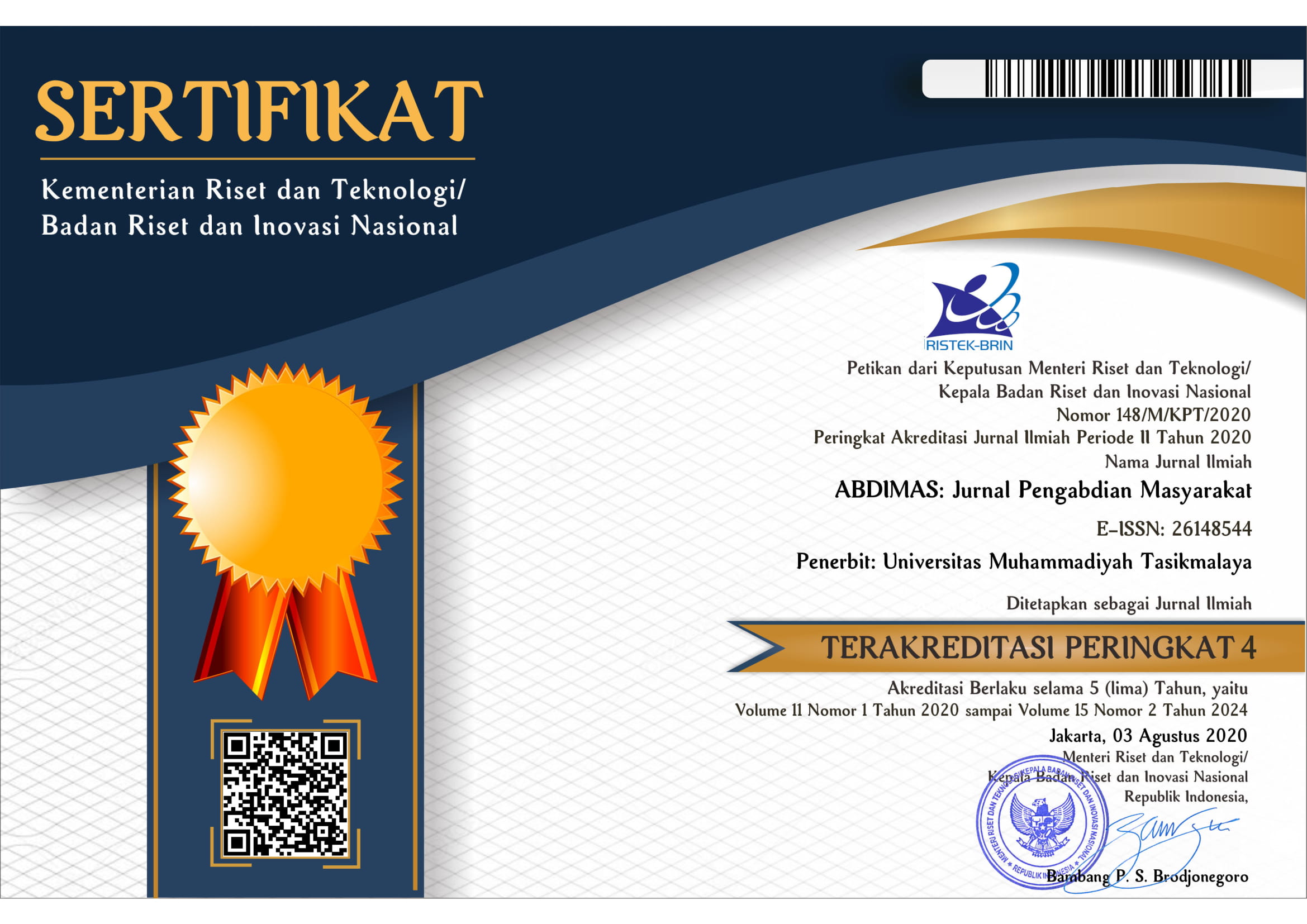Utilization of Local Product for Complementary Food Menu in Stunting Prevention
DOI:
https://doi.org/10.35568/abdimas.v7i3.4817Keywords:
Local Product, Complementary food, StuntingAbstract
Giving complementary breastmilk (MP-ASI) food needs to be given in the first six-months to reach the goal of optimal growth and development of baby. Nutritional intake of the baby needs to be monitored for the sake of it would be irreversible if the it not had been monitored. The aims of this research is to increasing the knowledge about the utilization of local product for complementary food menu in stunting prevention. The counselling was carried out on Wednesday, February 1st 2023, at the Pamengkang Village, Kramatwatu district, Serang regency. In the counselling, there were 50 participants from the target participant, such as, pregnant mother, mother with baby and child. The event was using the speech and advocate from the expert. The counselling would hope that all the participants realized about the various local product that can be used to make complementary food.
Downloads
References
A. H. Al-Rahmad, A. Miko, and A. Hadi, “Kajian Stunting Pada Anak Balita Ditinjau dari Pemberian ASI Eksklusif, MP-ASI, Status Imunisasi dan Karakteristik Keluarga Di Kota Banda Aceh,” J. Kesehat. Ilm. Nasuwakes, vol. 6, no. 2, pp. 169–184, 2013.
C. H. Soetjiningsih, Perkembangan Anak Sejak Pembuahan Sampai dengan Kanak-Kanak Akhir. Jakarta: Prenada, 2012.
Depkes, Manajemen Laktasi: Buku Panduan Bagi Bidan dan Petugas Kesehatan Di Puskesmas. Jakarta: Direktorat Jendral Bina Kesehatan Masyarakat, Direktorat Gizi Masyarakat, 2005.
Global Nutrition Report (GNR) tahun 2020.
Hermina and S. Prihatini, “Pengembangan Media Poster dan Strategi Edukasi Gizi untuk Pengguna Posyandu dan Calon Pengantin,” Bul. Penelit. Kesehatan., vol. 43, no. 3, pp. 195–206, 2015, doi: 10.22435/bpk.v43i3.4347.195-206.
K. Brown, K. Dewey, and L. Allen, Breast-feeding and Complementary Feeding, Complementary Feeding of Young Children in Developing Countries: A Review of Curent Scientific Knowledge. Ganeva, 1998.
Marlina, Yessi, and Dewi Erowati. "Pengolahan MP ASI Berbasis Pangan Lokal Di Desa Ranah Singkuang Kabupaten Kampar." LOGISTA-Jurnal Ilmiah Pengabdian kepada Masyarakat 5.2 (2021): 202-208.
Mentari, W. D., & Nurhalimah, S. P. (2022). FACTORS RELATED TO THE INCIDENCE OF STUNTING IN TODDLERS. PHSAJ-Public Health Sebelas April Journal, 1(2), 45-51.
Mentari, Witri Dewi, and Syarif Muhammad. "Prevention of Stunting Counselling for Pregnant Mother and Mother with Toddler." ABDIMAS: Jurnal Pengabdian Masyarakat 6.2 (2023): 3714-3719.
Mentari, Witri Dewi. "Penyuluhan Pencegahan Kejadian Stunting Kepada Ibu Hamil dan Ibu Balita di Posyandu Dusun Sukamaju Desa Jayamekar." Jurnal Pengabdian Kepada Masyarakat Sebelas April 1.1 (2023).
RISKESDAS, Riset Kesehatan Dasar Tahun 2018. Jakarta: Kementerian Kesehatan Republik Indonesia, 2018.
Studi Status Gizi Indonesia (SSGI) 2021.
WHO, WHO. (2010). Nutrition landscape information system (NLIS) Country Profile Indicators: Interpretation Guide. Geneva: World Health Organization, 2010.
WHO, Guiding Principles for Complementary Feeding of the Breastfed Child. 2003.












